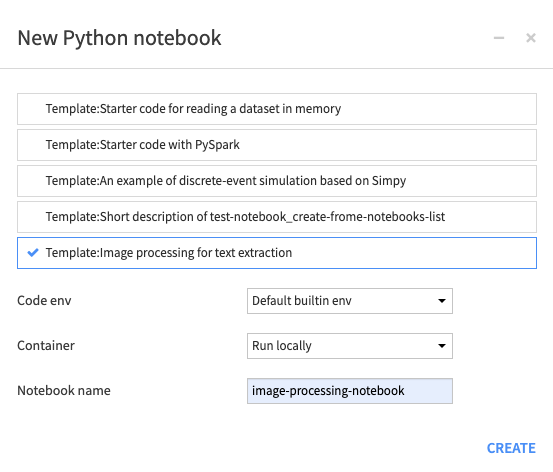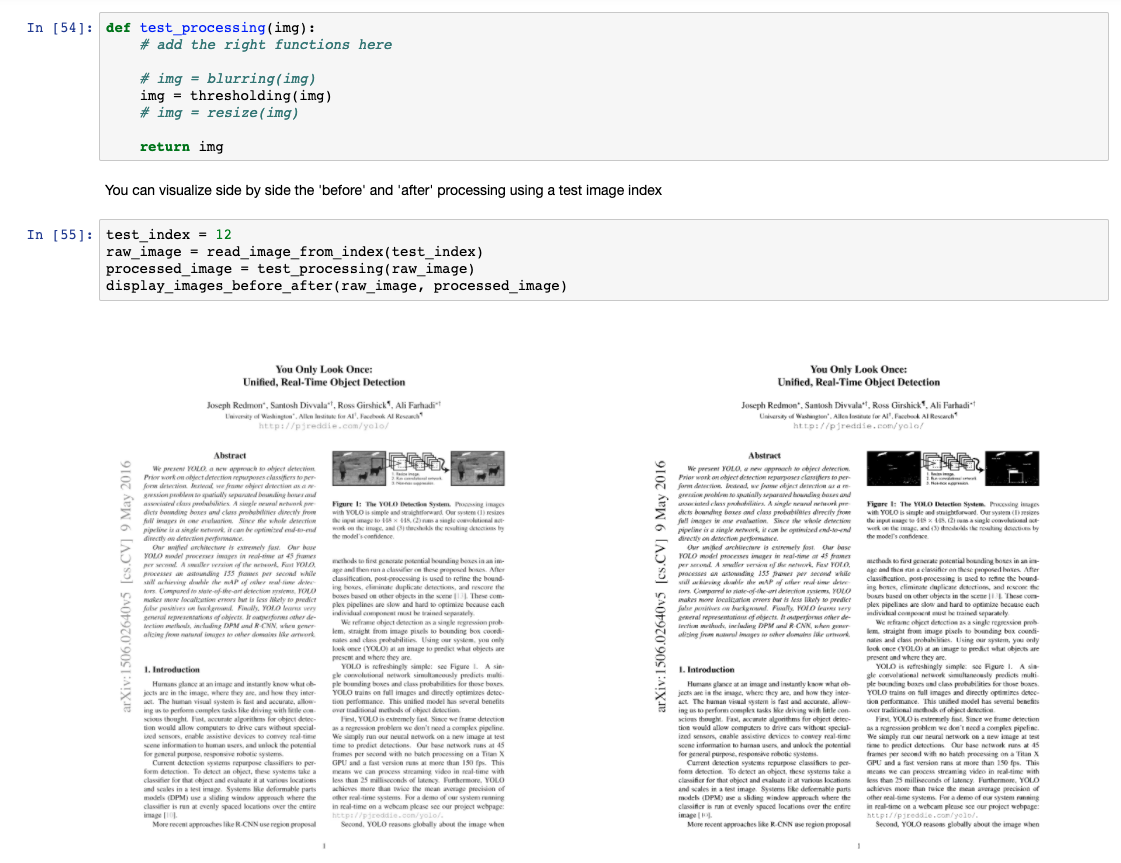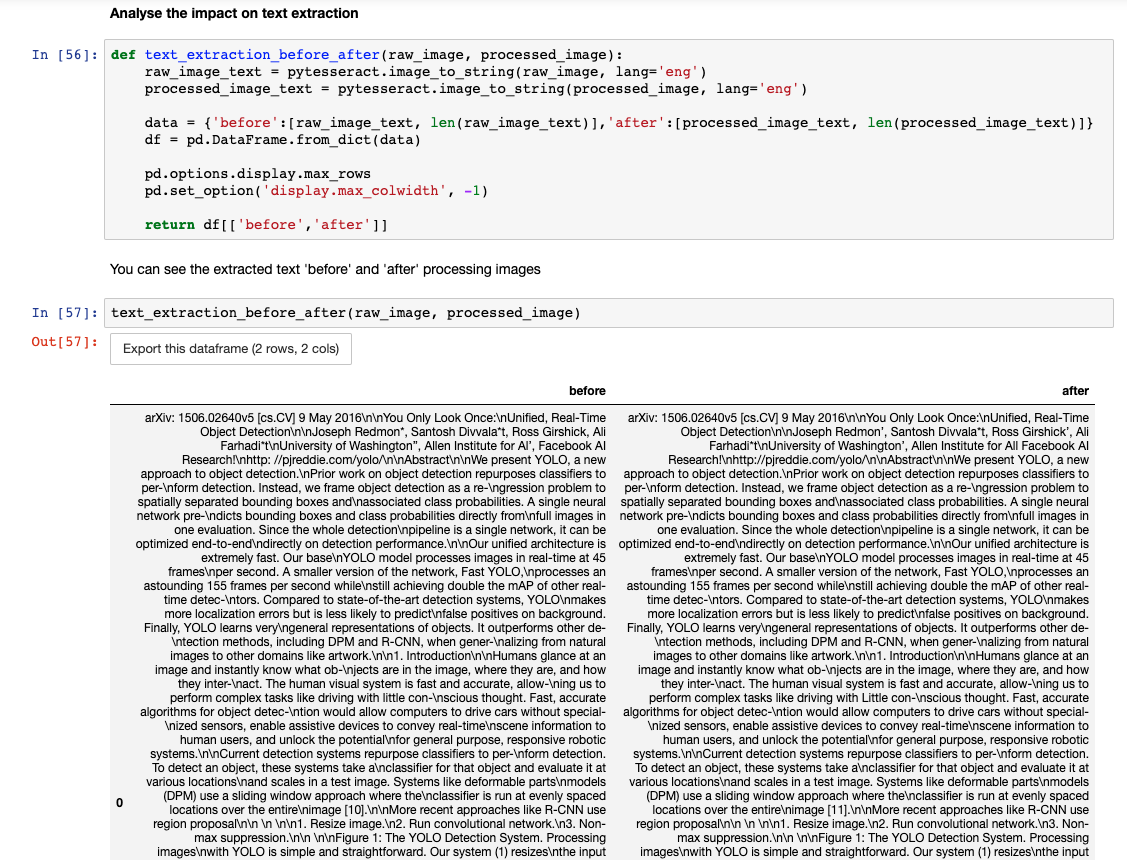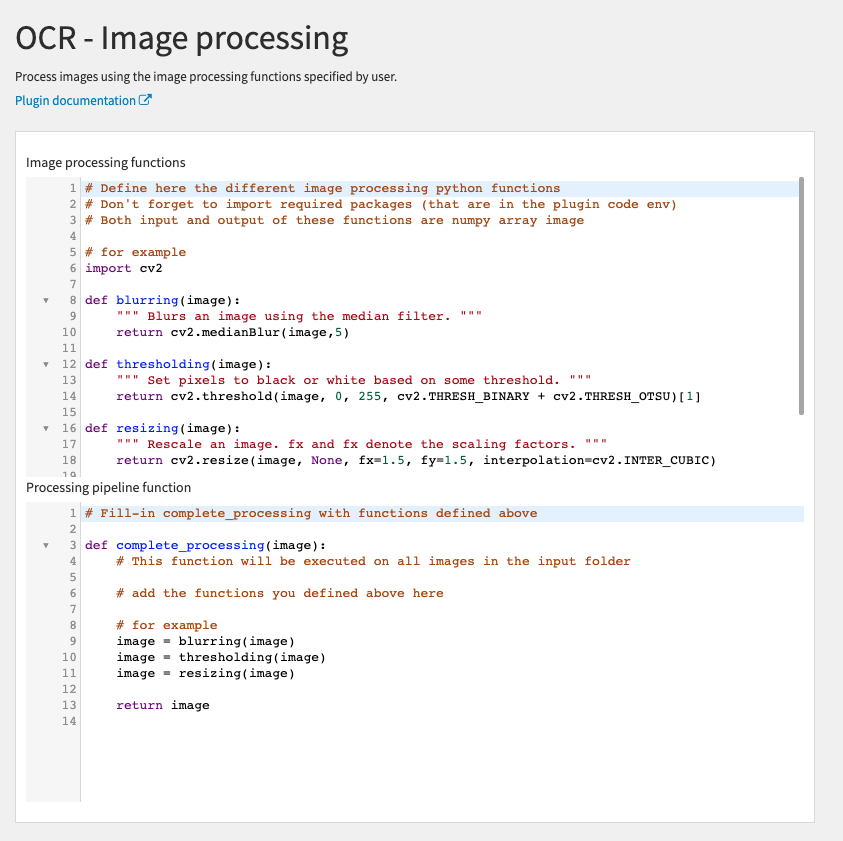Plugin for text extraction and optical character recognition (OCR) in python.
The plugin has five components (four recipes and a notebook template):
- OCR recipe: extract text from images using either the tesseract or the easyOcr engine and output a dataset with a filename column and a text column. This recipe has parameters to recombine multi-page PDF (for instance those that were split into multiple images in the Image Conversion recipe) into a single text row, to specify the language used in tesseract, and to remove special charaters from the extracted text. It takes as input a folder of PDF/JPG/JPEG/PNG/TIFF files (ideally the output of the Image Conversion recipe or of the Image Processing recipe).
- Text Extraction recipe: extract text content from various file types (using pypdfium2, docx or pandoc). It takes as input a folder of files and output a dataset with a filename column, a text column and an error column for when text failed to be extracted. For some input formats, it is possible to extract text in chunks, with a metadata column containing section info. Bookmarks positions can also be used to extract text chunks from PDF files, but it may not be suitable for all PDF files (e.g. multi-columns files).
- Image Conversion recipe: convert all types of images into jpg images and split multi-page PDF documents into multiple jpg images. It also convert images to grayscale. With advanced parameters, it is possible to set the image quality used by PIL and the DPI of images converted from PDFs.
- Image Processing notebook: notebook to explore different types of image processing to improve (or not) text extraction from tesseract. Then, the functions that were tested in the notebook can be used in the Image Processing recipe.
- Image Processing recipe: recipe to process images using functions defined by the user in the python editor area of the recipe parameter's form.
Go to notebook (G+N) and create a new python notebook. Select the template Image processing for text extraction and then check that the plugin code env is selected (you can set it in the tab Kernel > Change kernel).
Then, you can use the notebook to explore different type of image processing (use the pre-defined functions or write your owns). You need to enter the input folder id manually in the notebook.
In the notebook, you can visualize the effect of image processing functions using the function display_images_before_after defined in the notebook (display image before and after processing):
You can also look at the extracted text before and after image processing using the function text_extraction_before_after defined in the notebook:
When you are done exploring different type of image processing functions, you can copy the functions you want and paste them in the Image Processing recipe form.
Tesseract must be installed on the DSS instance server in order to use the Tesseract OCR engine.
Tesseract is available directly from many Linux distributions.
For example, depending on your package manager:
sudo apt install tesseract-ocr
or
yum install tesseract
Using homebrew: brew install tesseract
Using macports: sudo port install tesseract
For more informations, go to: https://github.com/tesseract-ocr/tessdoc/blob/master/Home.md.
If you want to specify languages in tesseract, you must install them on the machine with your DSS instance, you can find instructions on how to install them and the code for each language here https://tesseract-ocr.github.io/tessdoc/Data-Files.
Example for the english language (code eng):
sudo apt install tesseract-ocr-eng
or
yum install tesseract-langpack-eng
Using macports: sudo port install tesseract-eng
Using homebrew, you can download all languages at once: brew install tesseract-lang
You can check the installed languages by running:
tesseract --list-langs



